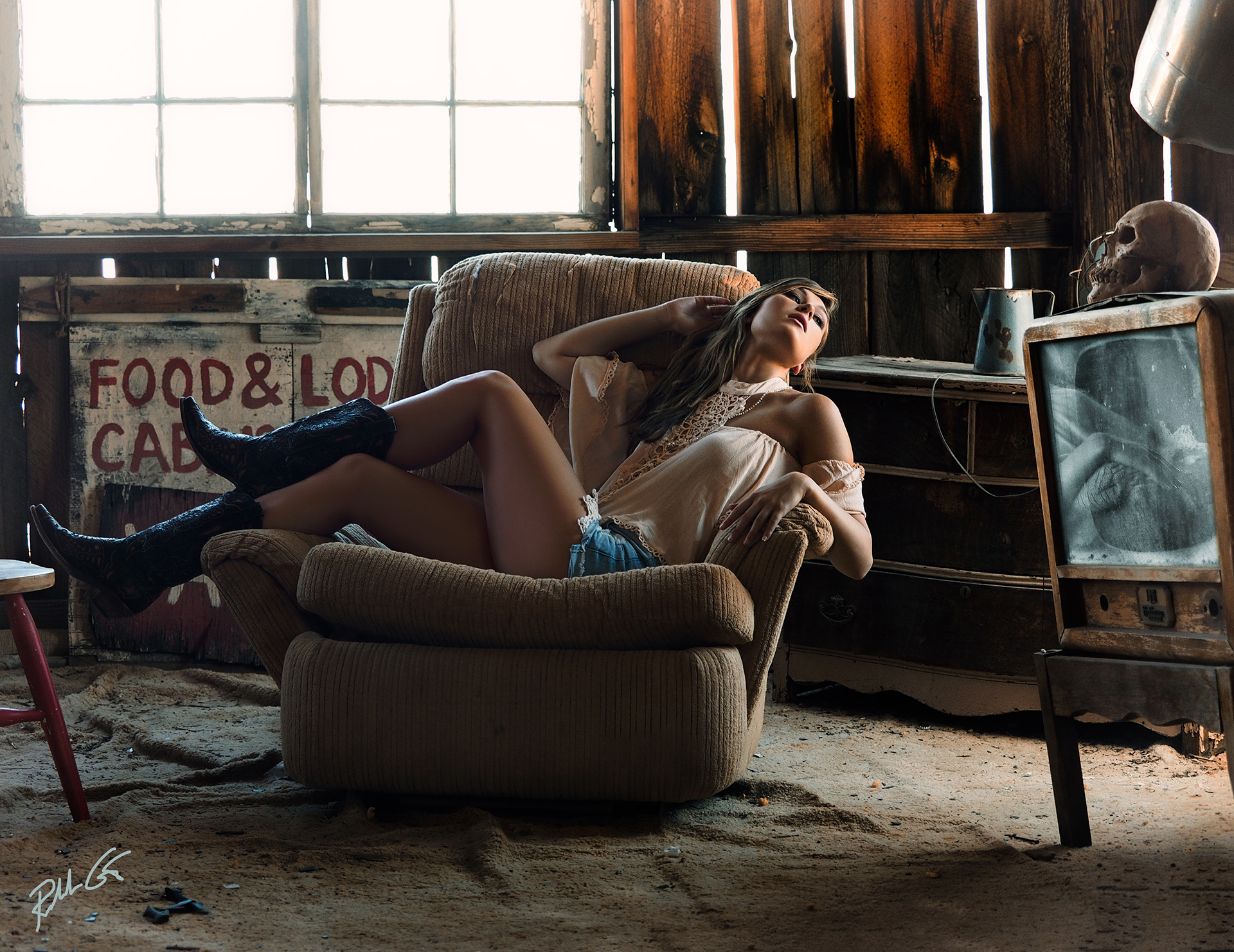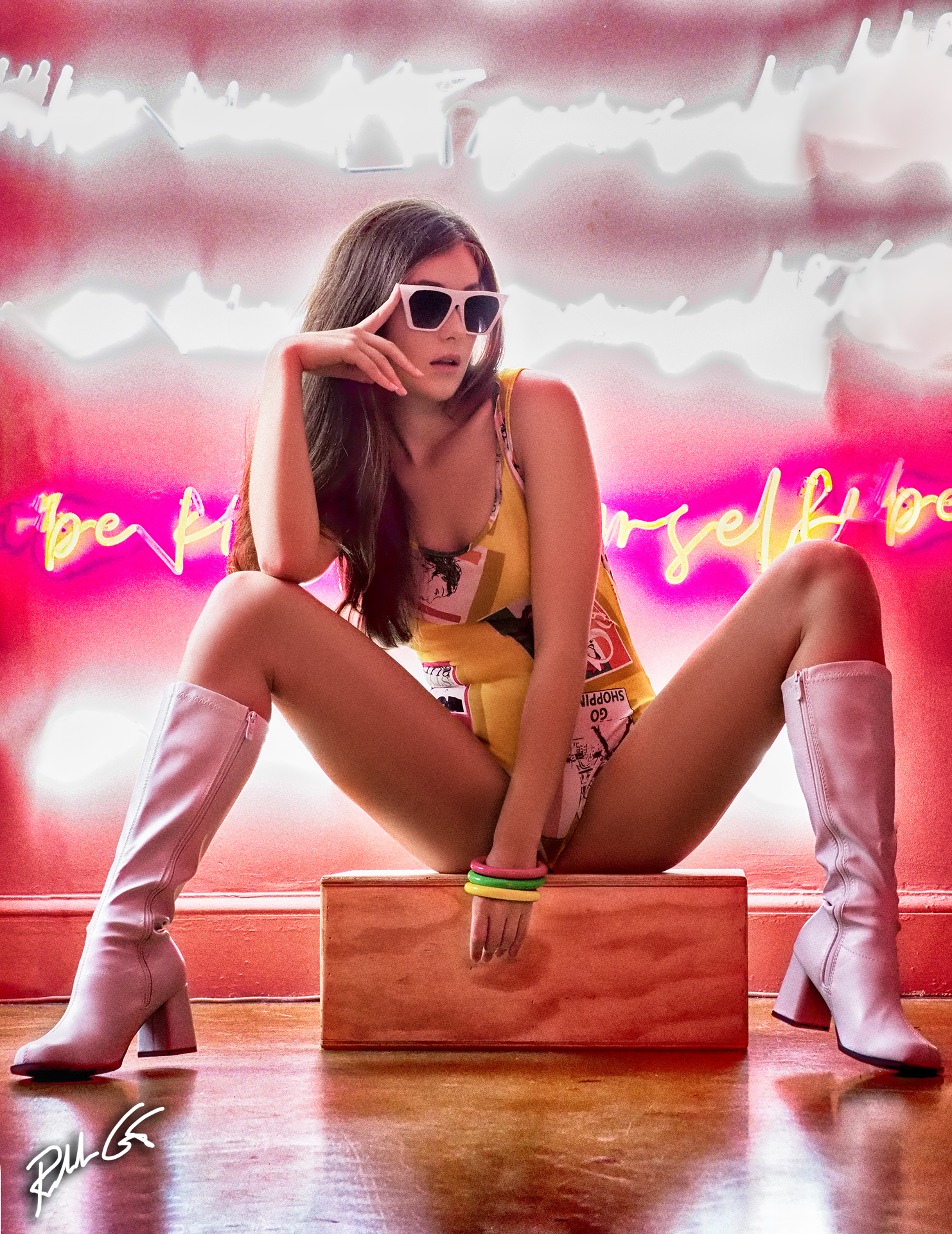Every photographer hits a creative rut where no matter how much our heart and passion drives us to shoot, we draw a blank. Well you can kick-start your photography with themes to get out of that rut. Themes are concepts photographers should carry in their brain to every photo shoot. More specific, think of them as “working themes.”

You can kickstart your photography with themes like “wide aperture” and “one light, one chair” in this example. Photo captured at F/2.8.
Working themes will bail you out every time at a photo shoot when you or your subject can’t come up with ideas or concepts. Basically, every photographer should write down a few themes, then remember them as themes they want to accomplish — call it your photography bucket list.
There’s no copyright of themes so whether their your own ideas or that of another photographer, they’ll help make your photos better just for trying them out. In fact, themes are end goals for photographers that rely on the mantra, “How do I make my photos better?”
It’s this question that should challenge all photographers any time they pick up a camera. The idea is to think of various themes when you shoot and challenge yourself constantly to make every photo better than the last one. These working themes will help keep you going and raise your photography to a higher level plus themes will bail you out when it counts.
Here are a few working themes that bail me out anytime I get into a crunch where my brain goes blank in creativity and feel free to adopt them:

This photo used two themes, “one light, one chair” and “vintage.”
Wide Aperture
This theme is exactly what it says, just open your lens’ aperture to the wider F/stops, anything from f/1.2 to f/4. It will add a pleasant “bokeh” in your background. Bokeh is a “mood changer” in photography, in fact, when you shoot at wider apertures it helps define your photographic style.
Challenge yourself where you shoot an entire photo shoot at F/4 or below. You’ll be surprised with the results as explained in, “The Photography Sweet Spot.” More specific, the latter photography tip is about how to avoid the sweet spot, or optimum aperture, when you photograph models — you can make the avoidance of a camera lens’ sweet spot as a theme in itself.
One Light, One Chair
In this theme the concept is two parts, first, find anything that provides a human a place to sit, preferably something unusual, like a chair with character or even a seat on an old farm tractor. Then only use one light source to illuminate your subject while still allowing for the character of the chair to appear. Even an old soda box that once held soda bottles makes for a great chair especially when it’s standing tall off its longest side.
Vintage
Think “vintage.” Visit a vintage store in your area with a model and have them find the right outfit that takes you back in time. You can either find the location after you find the right outfit or find the location and look for the outfit to match. This theme is more planned on pre-visualized concepts, but it’s achievable with effort and will provide for a great starting point that can evolve into another theme during the shoot, like that of “Wide Aperture.”
Mimic
This photography theme requires research first. Basically, pick any iconic photographer and study them. You can start with these six photographers that still continue to inspire photographers today. I don’t mean just study their work, do your research, learn about what makes them tick, read their biography, and listen to what others have said about them. Think of that iconic photographer as an implied mentor.
Take a piece of their photographic style, whether it’s their lighting, lens perspective choice, composition, etc., and try to mimic one of those characteristics of their photography with your photos. Notice I didn’t say copy, I said mimic. There is a difference. Think of mimic as “fair use” and copy as a copyright violation.
Now these are just ideas that can help kick-start your photography with themes especially when your creative mind draws a blank. When you hit that creative rut, reach into your mind and recall one of your stored themes, it can provide you with that jolt of photographic passion when you need it most at a photo shoot.




These tips inspire me and really get me thinking about more ways i want to stage my shoot. Thank you for the words of wisdom.